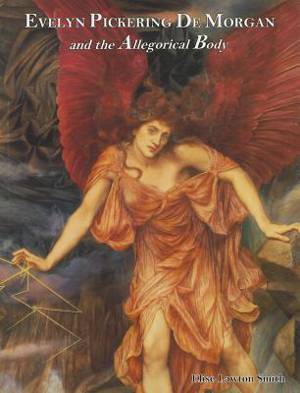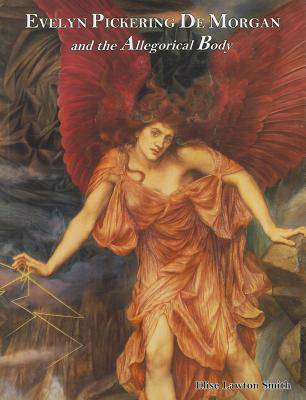
- Retrait gratuit dans votre magasin Club
- 7.000.000 titres dans notre catalogue
- Payer en toute sécurité
- Toujours un magasin près de chez vous
- Retrait gratuit dans votre magasin Club
- 7.000.000 titres dans notre catalogue
- Payer en toute sécurité
- Toujours un magasin près de chez vous
103,45 €
+ 206 points
Description
This is the first comprehensive study of the paintings of one of the most significant and prolific Victorian women artists, Evelyn Pickering De Morgan (1855-1919). Just over a hundred paintings and a handful of sculptures are known, and they reveal what her sister-biographer described as an "incessant struggle" to create. As she worked toward achieving professional recognition in her long career of exhibiting and selling her art, De Morgan also attempted to express in her polished, late Pre-Raphaelite style a distinctive, complex, and richly layered iconography. In her oeuvre she fused metaphysical concerns about material embodiment and spiritual transcendence with social concerns about debilitating constraints and creative freedom. Much of what makes De Morgan's art of special interest lies at the intersection of biographical, social, and spiritual realities, where the vision of a new freedom for women struggles with the still often restrictive visual and philosophical language of turn-of-the-century England. Although her style was relatively uniform throughout her career, combining aspects of late Pre-Raphaelitism, Symbolism, Aestheticism, and Victorian Classicism, she explored a wide range of mythological, biblical, literary, and allegorical subjects. The vast majority of these images involve women as the protagonists. At times they droop in resignation, caught within the confines of their domestic lives, but often they are portrayed as powerful natural elements actively in control of their destinies. On one level, these are allegories of the bondage of materialism and embodiment, showing the redemptive possibility of the soul's liberation from all such constraints. This close study of her work confirms that the idea of progress toward an afterlife is a recurrent motif, arising from a personal involvement in the movement of Spiritualism and paralleling the automatic writing passages in The Result of an Experiment (1909), anonymously published by Evelyn and her husband William De Morgan. On another level, however, common ground can also be found for some of these painting in the late Victorian social and political discourse concerning a woman's search for autonomy and for the physical and psychic space needed for independent action. De Morgan's images of imprisonment show women bound, as all humans are, by mortal flesh, but bound, more specifically, by female role norms. Woman's freedom, expressed in De Morgan's paintings of women as personifications of natural elements, is also two-fold, consisting of a non-gendered movement toward spirituality, toward the ethereal, but also as a particularly female turn away from stagnant domesticity toward the positive energies of creative expression. This book analyzes her exploration of these spiritualist and proto-feminist issues in a series of mythological, literary, and biblical images, in a number of war-related paintings associated with the Boer War and with World War I, and in the allegories for which she is most well known. De Morgan's art is illustrated here by 14 color plates and 67 black-and-white images. In addition, reproductions of 50 comparative works, most of them by her contemporaries in England, enhance our understanding of the period.
Spécifications
Parties prenantes
- Auteur(s) :
- Editeur:
Contenu
- Nombre de pages :
- 248
- Langue:
- Anglais
Caractéristiques
- EAN:
- 9781611472080
- Date de parution :
- 01-05-02
- Format:
- Livre relié
- Format numérique:
- Genaaid
- Dimensions :
- 218 mm x 279 mm
- Poids :
- 1179 g







